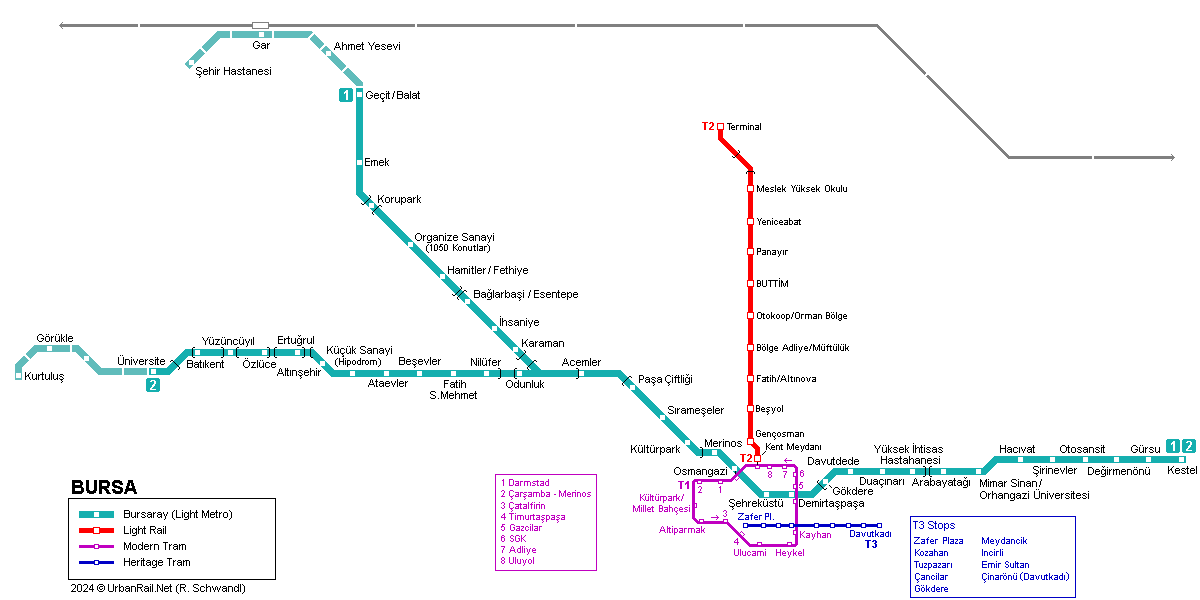
|
[ UrbanRail.Net ] [ Europe ] [ Americas ] [ Asia ] [ Africa ] [ Oceania ] [ News ] [ Books ] [ Links ] |
|
BURSA
|
| Turkey |

|
METRO
- BursaRay
|
|
Bursa (1.3 million inh.) lies in northwestern Turkey, some 150 km south of Istanbul and 400 km west of Ankara. "Bursaray" is a light metro system, which will extend about 50 km in the future. All sections of Bursaray run on separate right-of-way without any streets crossing at grade. High level platforms - 120 m long; overhead line (1500 V DC), track gauge 1,435 mm. 48 cars of the B-80 type (30m long) were delivered by Siemens (in collaboration with the local company Tüvasas). Siemens TS was responsible for the supply of signalling automation systems and the power supply system. Later the fleet was enlarged with 30 FLEXITY Swift light rail cars (similar to the U5s in Frankfurt/Main) from Bombardier, while 30+ second-hand 'Sneltram' cars (Duewag T-cars) have been purchased from Rotterdam (all since retired). The latest rolling stock are 60 GreenCity trains from Turkish manufacturer Durmazlar, the first having been delivered in mid-2016. |
| Photos |
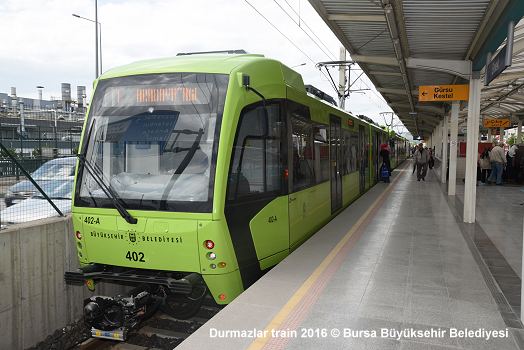
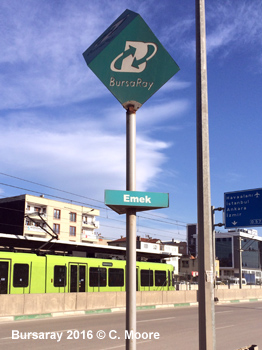
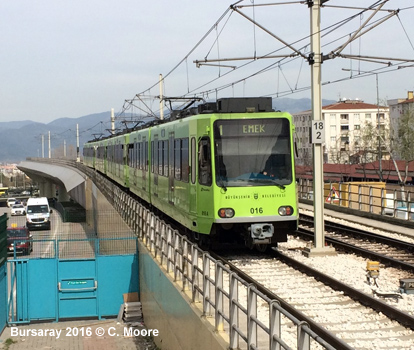
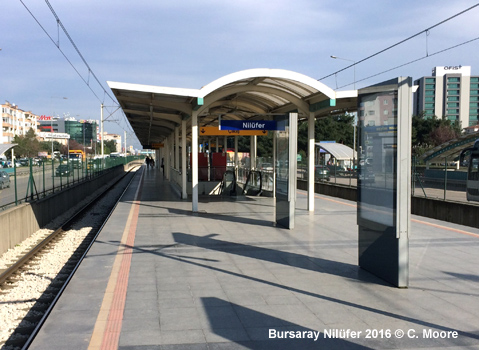
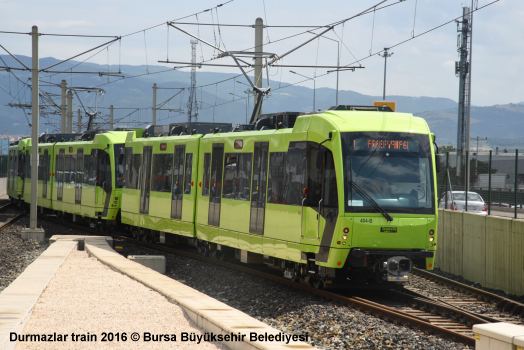
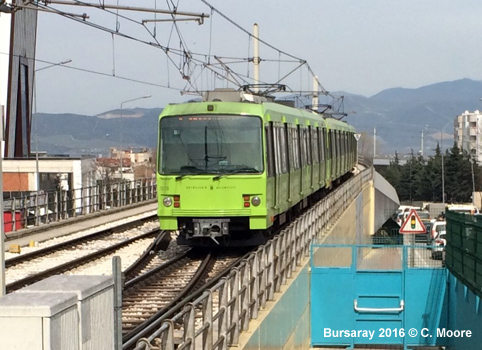
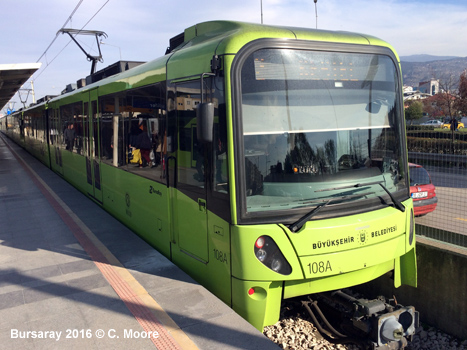
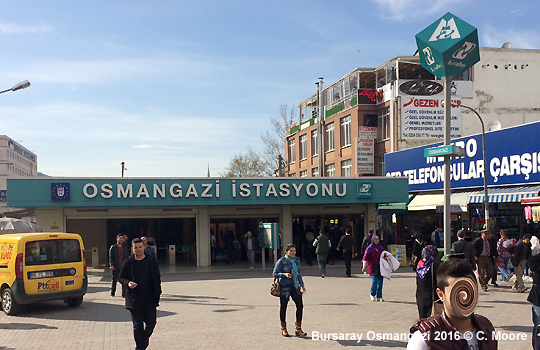
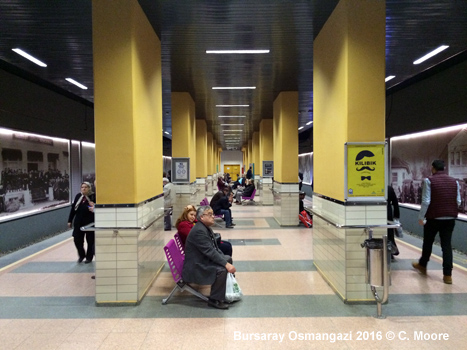
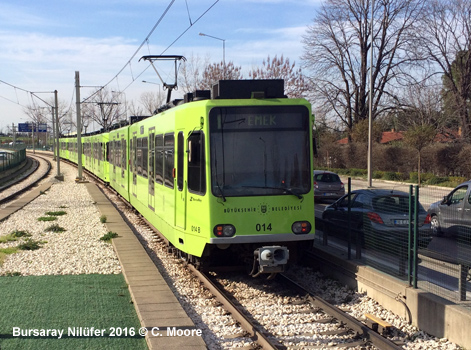
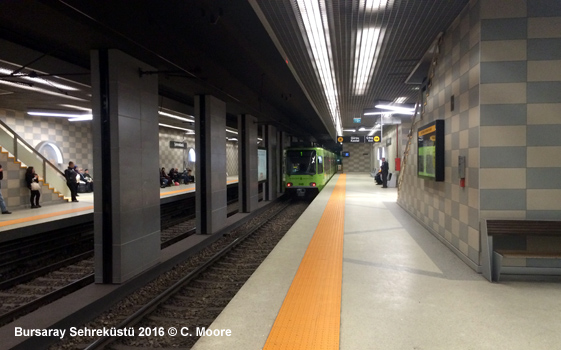
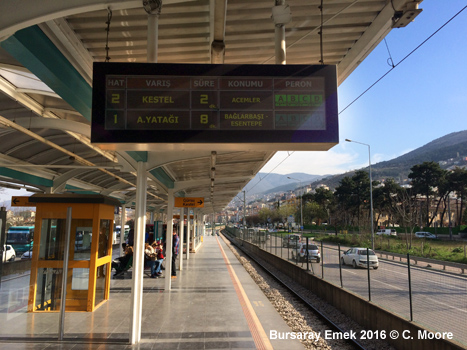
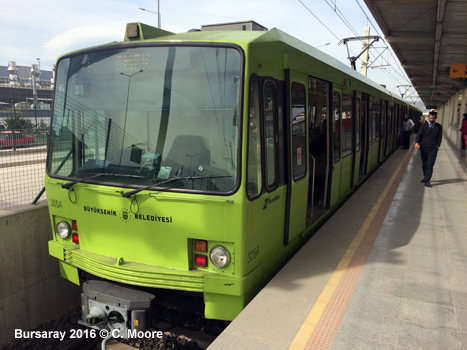
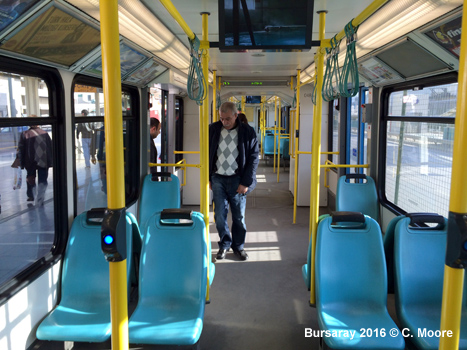
|
|
History
|
|
24
April 2002: passenger trial service started |
|
Projects |
|
- Northwestern extension further under construction to Sehir Hastanesi. - Western extension 1.5 km from Üniversite to Görükle. - Çali-Gürsu Metro Line: initial stage is 20.65 km with 16 stations running east-west parallel to the south of the current line 2. In a 2nd stage extensions, an 8 km northeastern branch to Demirtas may be added. |
|
Photos
|
| TRAM/LIGHT RAIL - BurTram |
|
The BurTram system currently consists of three rather different lines: - Modern single-direction circular tram line T1 (6.5 km, 14 stops) opened 12 Oct 2013, running only anti-clockwise around Old Town; uses Turkish-built Durmaray low-floor trams - Line T2 (8.2 km) opened on 02 July 2022 as a light rail line, running from Kent Meydani in the city centre north to Terminal (Coach Station), mostly in the median of a major road with only a few level crossings. - Heritage tram line T3 operating along Cumhuriyet Caddesi (Avenue of the Republic), single-track, 2.2 km
|
| Photos |
|
|
|
Links
|
|
Burulas (Public Transport Projects in Bursa) Bursaray at Wikipedia.tr Ray Haber (Turkish Rail News)
|
|
Bursa
Impressions
|
|
In March 2016, Craig Moore reports from Bursa: Surrounded by high mountains to the south and the Sea of Marmara to the north (90mins ferry from Istanbul), Bursa has a wonderful setting and a rich collection of 14th Century Ottoman buildings which have been awarded UNESCO World Heritage status. The city also boasts an interesting and efficient 39km Light Metro system (6.6km underground) with 38 stations (7 underground). The Bursaray is operated by the citys transport authority Burulas and has two lines which run from the east of the city, skirting the northern fringes of the old town (Sehreküstü), to the traditional commercial centre (Osmangazi) and westward to Acemler, where the sheds and operations centre are located. From here the 18km of shared line divides, with Line 1 branching north-west to Emek (bus station for services to the port), whilst Line 2 keeps true to the east-west alignment to Batikent and Üniversite. The line has an interesting mix of grades with the eastern section having grade and short elevated sections before heading underground after Gökdere through the central area. Westward beyond Merinos the line is at grade, operating in the broad central corridor of major roads, although this section has occasional underground sections/stations below junctions. The system uses standard gauge and overhead power supply. Services operate from 0600 to 0030 with base headways of 10mins on the 2 lines, providing an impressive 5min frequency on the main corridor. The station entrances are located next to the tall totems, complete with bright green cube holding the smart Bursaray logo in white. Because most stations outside of the central area are grade, and are located in the centre of busy roads, access is by underground passage and these lead to small entrance hall, with information board (strip map, locale map, A4 departure sheet) and a small number of ticket machines. These operate in Turkish only, and only accept small denomination bank notes (the coin slots are taped up). There is no ticket office or Bursaray staff (only the odd security guard) and so this can cause a problem. As I had coins, I had to find a shop to change 20 Lira notes into 5 Lira notes to use in the machines. I then had to guess which button to press to get a ticket. Eventually I managed this but it was rather time consuming. Fares are a standard 3 TL (0.94) for each journey and a card based ticket is dispensed which is tapped on entry to allow access through turnstiles (there is open exit from the system). The platforms are long, basic, smart and functional, with a canopy for shade along most of the length of the platforms, seating, clear directional signage, information boards and plentiful next train indicators. The underground stations are more substantial and stylish with a real buzz. These stations have a significant street presence and the entrance halls are accessed via stairs. Ticket halls are more extensive here but still lack ticket offices. This area provides access via stairs or escalator to the side platforms (Merinos has an island platform). These have seating, electronic indicators, artefacts, wall photographs etc and are quite lovely. Sehreküstü has the Burulas office where the local population queue for passes etc, but here, as everywhere, there is no hard copy information available, although the office does offer a Turist Kart/24 Saatlik Billet. Whilst I dont see a use for this, and it is problematic that it is not available at Emek (where most visitors would start using the system) it is the only system in Turkey to offer such a ticket. If only one were available in Istanbul! Once on board the ride is smooth and fast. The trains go at some pace with the exception of the Merinos to Sehreküstü section, where the line meanders quite a lot and the train is very slow, noisy and juddery. There is a mix of stock (with the original Siemens stock, newer Bombadier Flexity Swift and the odd Duewag set. The trains operate as 4-car sets and have a lovely rich green colour on the exterior. Inside the trains they are very well kept. Seating is paired and there is a basic strip map above the doors. There is electronic next station at the end of each carriage and the newer stock also has audio messages in Turkish. This is a very smart system, tidy, clean, efficient, and well patronised. The only slight imperfection is the difficulty of accessing tickets and the non-availability of assistance, but once on the system it is very impressive for a medium sized system. |
|
Bernhard Kußmagk & Robert Schwandl: TRAM
ATLAS TÜRKIYE May
2024 |
2007 © Robert Schwandl (UrbanRail.Net)